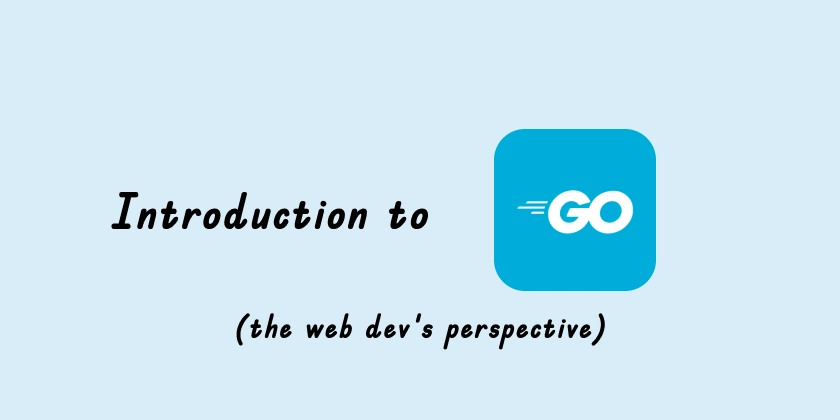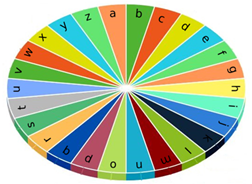First Impressions of Go: A Web Developer’s Perspective
As a web developer well-versed in Java, JavaScript, TypeScript, and frameworks like Next.js, React and Astro, I was intrigued by a modern language that promised simplicity, performance, and a refreshing development experience. Enter Go — a statically typed, compiled language that emphasizes clarity and robust tooling. In this article, I share my journey into Go, its syntactic elegance, and a detailed walk-through of my first beginner project: a random number guessing game. Clean Syntax and Developer Experience Go stands out with its clean, minimalist syntax. Unlike dynamic languages, Go enforces explicit error handling, which might initially seem verbose but ultimately leads to more reliable and maintainable code. Here are some key benefits: Fast Compilation: Rapid build times facilitate quick iteration. Standardized Tooling: Utilities like gofmt ensure consistent code style. Built-in Testing: An integrated testing framework makes it easy to write and run tests. Explicit Error Handling: This forces you to consider edge cases, leading to robust applications. My Beginner Project: A Random Number Guessing Game To get hands-on with Go, I developed a simple random number guessing game. This project demonstrates essential concepts like random number generation, user input handling, and explicit error checking. Code Overview package main import ( "fmt" "math/rand" "strconv" "time" ) // randomNumberGame is defined here func randomNumberGame() { var randSource = rand.NewSource(time.Now().UnixNano()) var rand = rand.New(randSource) // Generate a random number between 1 and 100 number := rand.Intn(100) + 1 // Initialize the user's guess and attempts var guess string attempts := 0 // Start the guessing game loop for { // Prompt the user for a guess fmt.Print("Enter your guess (1-100): ") fmt.Scanln(&guess) // Increment the number of attempts attempts++ if guess == "exit" || guess == "quit" { fmt.Println("Exiting game...") break } // Check if the guess is correct, too high, or too low parsedGuess, err := strconv.ParseInt(guess, 10, 64) if err != nil { fmt.Println("Invalid input. Please enter a valid number.") continue } if int(parsedGuess) number { fmt.Println("Too high! Try again.") } else { // If the guess is correct, congratulate the user and end the game fmt.Printf("Correct! You guessed the number in %d attempts.\n", attempts) break } } } Breaking Down the Code Package Declaration and Imports: The package main designates this file as an executable program. Standard libraries such as fmt (for I/O), math/rand (for random numbers), strconv (for string conversion), and time (for seeding) are imported. Random Number Initialization: A new random source is created using rand.NewSource(time.Now().UnixNano()) to seed randomness with the current time. The call to rand.Intn(100) + 1 produces a random integer between 1 and 100. Game Loop and User Interaction: A loop continuously prompts the user for input using fmt.Scanln(&guess), increments the attempt counter, and checks if the user wants to exit. Input is validated and converted from a string to an integer with strconv.ParseInt. Feedback is given based on whether the guess is too low, too high, or correct. When the guess is correct, the loop exits after congratulating the user. Error Handling and Robustness: Every input operation and conversion is checked for errors, embodying Go’s philosophy of explicit error handling which minimizes unexpected behaviors. The Go Ecosystem and Community Despite its concise syntax, Go offers a growing ecosystem rich with libraries and frameworks that support web development, networking, and data processing. The official documentation is comprehensive, and the community is welcoming to newcomers. Whether you're building microservices, command-line tools, or experimenting with concurrency, there's ample support to guide your journey. Trade-offs and Considerations While Go brings many benefits, it also has some trade-offs: Static Typing: The strict type system may feel rigid coming from dynamic languages but helps catch errors early. Minimal Syntactic Sugar: Tasks may require more boilerplate code, though this trade-off results in clarity and maintainability. Explicit Error Handling: This can be verbose but ensures every potential issue is addressed promptly. Final Thoughts My initial foray into Go has been both challenging and immensely rewarding. The language's

As a web developer well-versed in Java, JavaScript, TypeScript, and frameworks like Next.js, React and Astro, I was intrigued by a modern language that promised simplicity, performance, and a refreshing development experience. Enter Go — a statically typed, compiled language that emphasizes clarity and robust tooling. In this article, I share my journey into Go, its syntactic elegance, and a detailed walk-through of my first beginner project: a random number guessing game.
Clean Syntax and Developer Experience
Go stands out with its clean, minimalist syntax. Unlike dynamic languages, Go enforces explicit error handling, which might initially seem verbose but ultimately leads to more reliable and maintainable code. Here are some key benefits:
- Fast Compilation: Rapid build times facilitate quick iteration.
-
Standardized Tooling: Utilities like
gofmtensure consistent code style. - Built-in Testing: An integrated testing framework makes it easy to write and run tests.
- Explicit Error Handling: This forces you to consider edge cases, leading to robust applications.
My Beginner Project: A Random Number Guessing Game
To get hands-on with Go, I developed a simple random number guessing game. This project demonstrates essential concepts like random number generation, user input handling, and explicit error checking.
Code Overview
package main
import (
"fmt"
"math/rand"
"strconv"
"time"
)
// randomNumberGame is defined here
func randomNumberGame() {
var randSource = rand.NewSource(time.Now().UnixNano())
var rand = rand.New(randSource)
// Generate a random number between 1 and 100
number := rand.Intn(100) + 1
// Initialize the user's guess and attempts
var guess string
attempts := 0
// Start the guessing game loop
for {
// Prompt the user for a guess
fmt.Print("Enter your guess (1-100): ")
fmt.Scanln(&guess)
// Increment the number of attempts
attempts++
if guess == "exit" || guess == "quit" {
fmt.Println("Exiting game...")
break
}
// Check if the guess is correct, too high, or too low
parsedGuess, err := strconv.ParseInt(guess, 10, 64)
if err != nil {
fmt.Println("Invalid input. Please enter a valid number.")
continue
}
if int(parsedGuess) < number {
fmt.Println("Too low! Try again.")
} else if int(parsedGuess) > number {
fmt.Println("Too high! Try again.")
} else {
// If the guess is correct, congratulate the user and end the game
fmt.Printf("Correct! You guessed the number in %d attempts.\n", attempts)
break
}
}
}
Breaking Down the Code
-
Package Declaration and Imports:
- The
package maindesignates this file as an executable program. - Standard libraries such as
fmt(for I/O),math/rand(for random numbers),strconv(for string conversion), andtime(for seeding) are imported.
- The
-
Random Number Initialization:
- A new random source is created using
rand.NewSource(time.Now().UnixNano())to seed randomness with the current time. - The call to
rand.Intn(100) + 1produces a random integer between 1 and 100.
- A new random source is created using
-
Game Loop and User Interaction:
- A loop continuously prompts the user for input using
fmt.Scanln(&guess), increments the attempt counter, and checks if the user wants to exit. - Input is validated and converted from a string to an integer with
strconv.ParseInt. - Feedback is given based on whether the guess is too low, too high, or correct. When the guess is correct, the loop exits after congratulating the user.
- A loop continuously prompts the user for input using
-
Error Handling and Robustness:
- Every input operation and conversion is checked for errors, embodying Go’s philosophy of explicit error handling which minimizes unexpected behaviors.
The Go Ecosystem and Community
Despite its concise syntax, Go offers a growing ecosystem rich with libraries and frameworks that support web development, networking, and data processing. The official documentation is comprehensive, and the community is welcoming to newcomers. Whether you're building microservices, command-line tools, or experimenting with concurrency, there's ample support to guide your journey.
Trade-offs and Considerations
While Go brings many benefits, it also has some trade-offs:
Static Typing:
The strict type system may feel rigid coming from dynamic languages but helps catch errors early.Minimal Syntactic Sugar:
Tasks may require more boilerplate code, though this trade-off results in clarity and maintainability.Explicit Error Handling:
This can be verbose but ensures every potential issue is addressed promptly.
Final Thoughts
My initial foray into Go has been both challenging and immensely rewarding. The language's focus on simplicity, efficient tooling, and a well-structured approach to concurrency makes it an attractive choice for developers seeking performance and maintainability. The random number guessing game provided a solid introduction to Go's fundamentals, and I hope this detailed walkthrough inspires you to explore Go as well.
If you're a web developer looking to broaden your horizons or simply curious about a fresh programming paradigm, I invite you to dive into Go. Start with small projects, experiment with its features, and join the vibrant community. Your next breakthrough might just be a simple game or tool away!
Happy coding, and I look forward to hearing about your Go adventures!










![[DEALS] The Premium Learn to Code Certification Bundle (97% off) & Other Deals Up To 98% Off – Offers End Soon!](https://www.javacodegeeks.com/wp-content/uploads/2012/12/jcg-logo.jpg)






































































